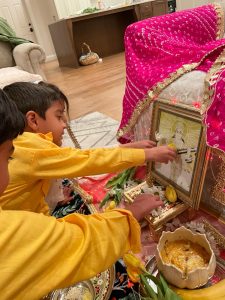
Setting Up A Puja Temple or Place
Setting up a Hindu temple (Mandir) or a sacred space at home involves creating a dedicated area for worship and spiritual practices. Here are some
In a world that’s rapidly changing, Practicing Hinduism: A Step-by-Step Guide for the New Generation serves as a precious keepsake, passed down through generations to preserve the rich traditions of Hinduism. This book is not just a guide—it’s a key to unlocking the spiritual practices that have sustained our ancestors for centuries. Whether now or in the future, it ensures that no culture, no tradition, and no sacred ritual is ever lost.
As grandparents pass wisdom to parents, and parents pass it to their children, this book stands as a timeless treasure—a gift that continues to teach and inspire, regardless of time or distance.
It will guide the next generation, whether they are ready now or later, offering them the tools to reconnect with their roots and embrace the beauty of Hindu traditions in a modern world.
A Keepsake for Generations to Come: More than just a book, it’s a key to the spiritual legacy that will be passed down, ensuring traditions live on.
Preserving Our Culture: In a world where ancient practices are fading, this book preserves the rituals and wisdom that are too valuable to be lost.
Accessible for all Ages: Written for both adults and young minds, it is the perfect guide for parents and children alike to learn together.
A Gift of Knowledge and Tradition: Give your children and grandchildren a gift that will continue to serve them, offering guidance when they need it most.
Learn Puja 101 – Perform sacred rituals with confidence, learning step-by-step how to set up an altar, make offerings, and invoke divine blessings.
Learn Festivals of Hinduism – Celebrate with purpose! Understand the deeper significance of Hindu festivals and follow authentic rituals to make every occasion meaningful.
Learn Ancient Mantras – Harness the energy of many powerful chants to remove obstacles, attract positivity, and strengthen your spiritual connection.
Learn Traditional Meditation – Explore ancient techniques like Kundalini and mudras to calm the mind, awaken inner peace, and connect with the divine.
Observe Traditional Fasts – Discover the spiritual and health benefits of fasting while learning the proper methods to observe them with devotion.
Explore Ancient Scriptures – Uncover timeless wisdom from Hindu scriptures, simplified into practical lessons for modern life.
Empower the Next Generation – Pass down rituals, values, and traditions in an easy-to-follow way, ensuring Hindu culture thrives for years to come.
This book bridges tradition and modern life, making Hindu rituals, festivals, and spiritual practices accessible to all.
Don’t just learn—experience the richness of Hinduism in a way that fits your life.
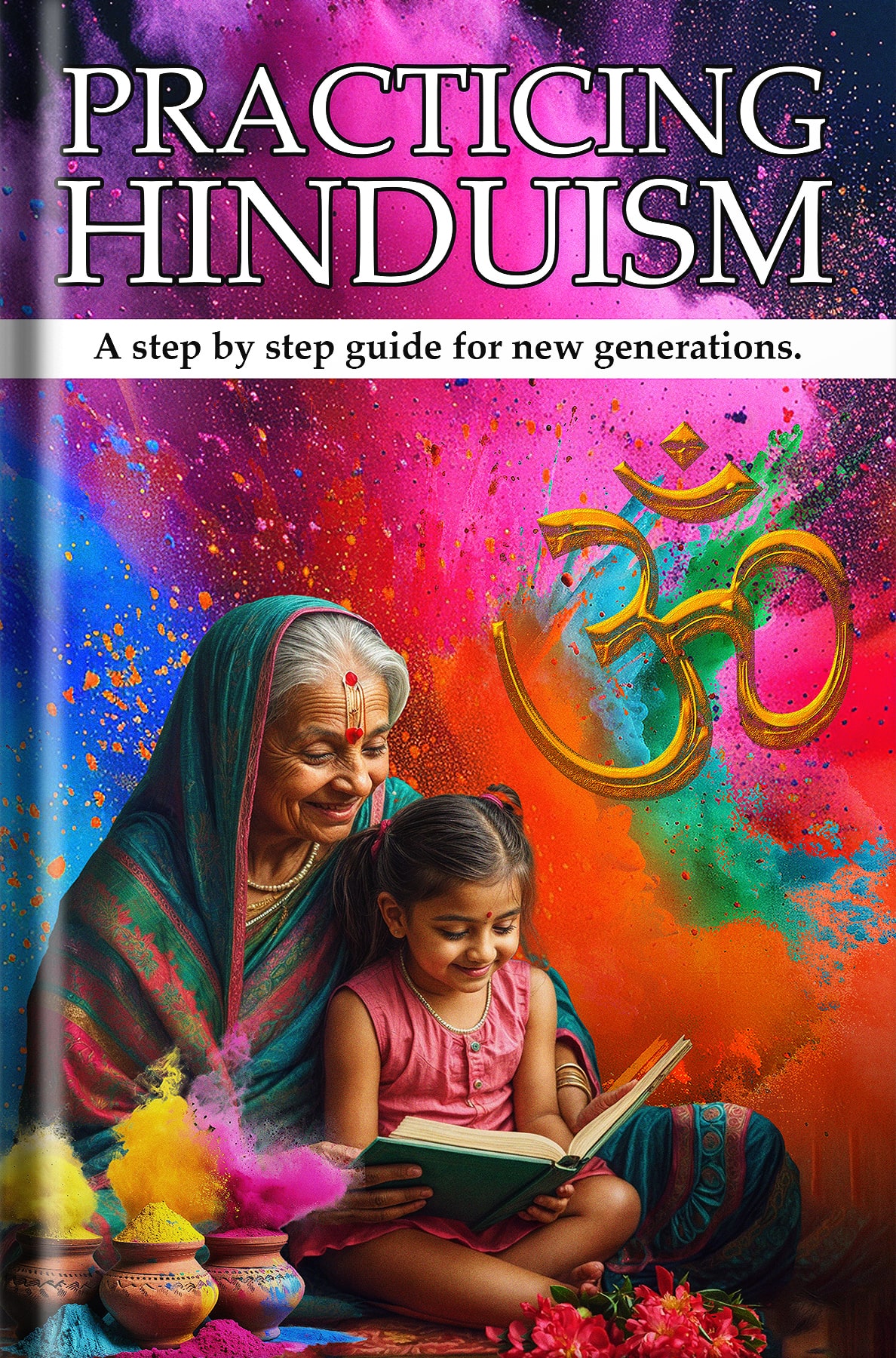
While Practicing Hinduism is just the beginning, I’m already working on my next exciting project—a guide for parents looking to introduce their children to the beauty of Hinduism. This book will serve as a valuable resource for families, offering simple, engaging, and meaningful ways to teach and prep the children from birth about Hindu traditions, rituals, and values.
Stay tuned for updates on this project as it unfolds. This upcoming guide will be perfect for parents who want to raise their children with a deep understanding of their heritage, making Hinduism accessible and enjoyable for younger hearts and minds.


Setting up a Hindu temple (Mandir) or a sacred space at home involves creating a dedicated area for worship and spiritual practices. Here are some
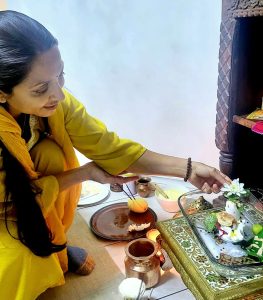
Certain symbols, tools, and items hold profound significance in Puja as gateways to deeper spiritual connections. Let’s delve into their essence and spiritual meaning to
Holi marks the arrival of spring and the triumph of good over evil. Inspired by the love of Radha and Krishna, it’s celebrated with colored powders, water balloons, and music. People come together to forgive, forget, and enjoy festive treats like gujiya and thandai.

Diwali celebrates the victory of light over darkness and good over evil. It honors Lord Rama’s return to Ayodhya and Goddess Lakshmi’s blessings for prosperity. Homes are lit with oil lamps, and fireworks light up the sky. Families exchange sweets and gifts, creating a joyful atmosphere.
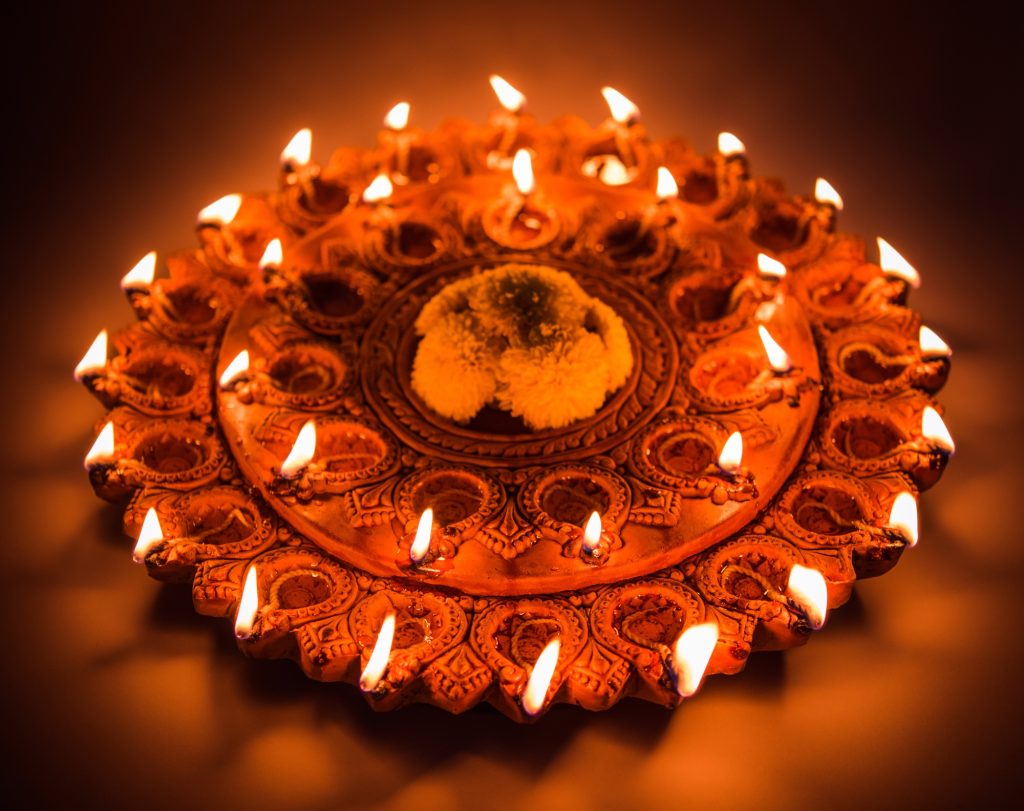
Navaratri is dedicated to Goddess Durga and her victory over the demon Mahishasura. For nine nights, devotees fast, dance (Garba/Dandiya), and perform rituals. Each day honors a different form of the goddess, culminating in Dussehra.

Janmashtami celebrates the birth of Lord Krishna with devotional songs, dances, and prayers. Temples and homes are decorated, and devotees fast until midnight. The festival often includes reenactments of Krishna’s childhood, especially his love for butter.
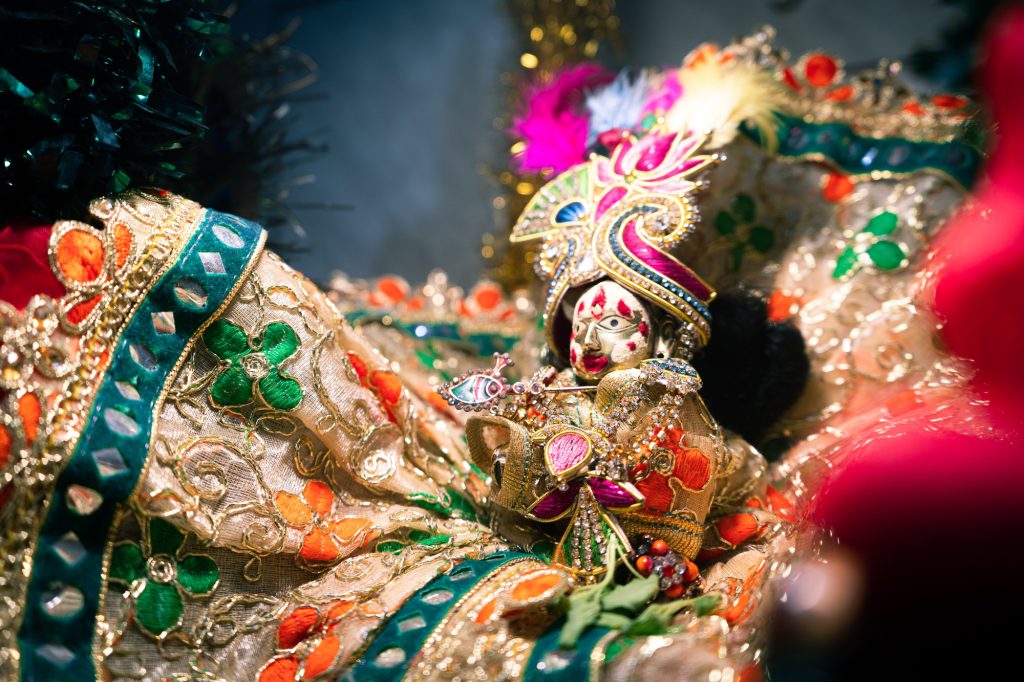
Raksha Bandhan celebrates the bond between siblings. Sisters tie a protective thread (rakhi) on their brothers’ wrists, symbolizing love and care. Brothers, in return, promise to protect their sisters and offer gifts. The festival strengthens family ties and traditions.
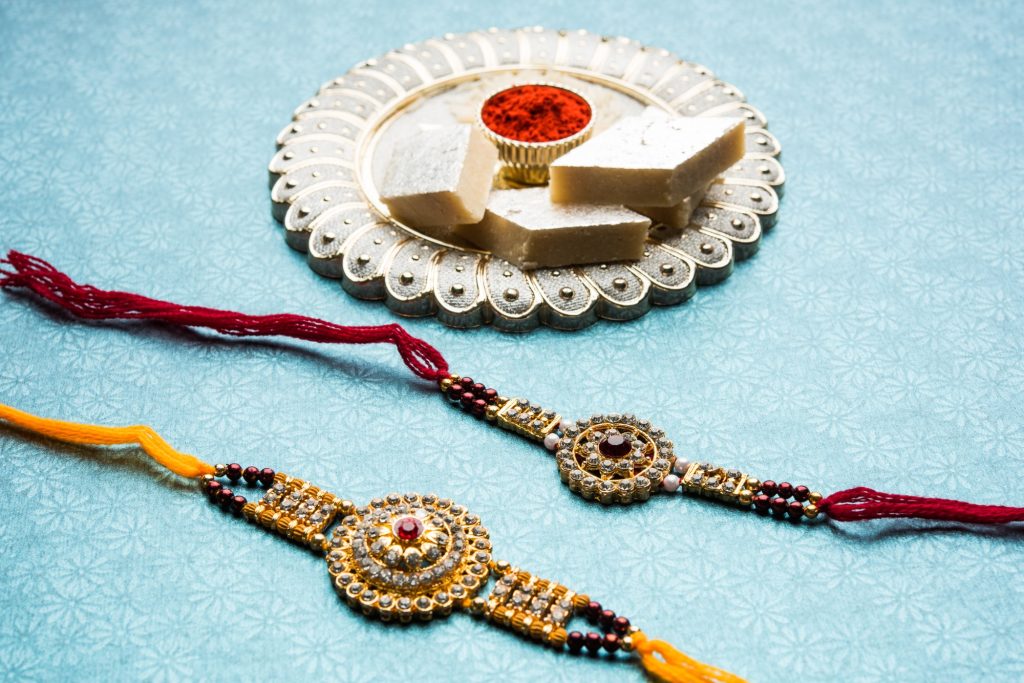

Lorem ipsum dolor sit amet, consectetur adipiscing elit. Sed do eiusmod tempor incididunt ut labore et dolore magna aliqua. Ut enim ad minim veniam, quis nostrud exercitation ullamco laboris nisi ut aliquip ex ea commodo consequat. Duis aute irure dolor in reprehenderit in voluptate velit esse cillum dolore eu fugiat nulla pariatur.

Lorem ipsum dolor sit amet, consectetur adipiscing elit. Sed do eiusmod tempor incididunt ut labore et dolore magna aliqua. Ut enim ad minim veniam, quis nostrud exercitation ullamco laboris nisi ut aliquip ex ea commodo consequat. Duis aute irure dolor in reprehenderit in voluptate velit esse cillum dolore eu fugiat nulla pariatur.

Lorem ipsum dolor sit amet, consectetur adipiscing elit. Sed do eiusmod tempor incididunt ut labore et dolore magna aliqua. Ut enim ad minim veniam, quis nostrud exercitation ullamco laboris nisi ut aliquip ex ea commodo consequat. Duis aute irure dolor in reprehenderit in voluptate velit esse cillum dolore eu fugiat nulla pariatur.
“Food is seen as a gift from the divine and a vital element of life, deserving of gratitude and mindful consumption.”
Sumita Sharma Kolppa.
This perspective encourages us to see every meal as a sacred moment, where we honor both the food and its source. Mindful consumption nurtures our body, mind, and spirit in harmony. Indeed, a beautiful line and a reminder to never underestimate the food on our plates.